Motorized Hurricane Screen
Why Maxforce

MAXFORCE PROVEN PROTECT
Engineered For Excellence
For nearly two decades, MaxForce has manufactured hurricane screens to meet the most demanding building code, the High Velocity Hurricane Zone of Miami-Dade. The MaxForce track is our newest version of the fixed track we have used with great success for high wind applications all over the globe.
The benefits of a fixed track are unmatched strength - this is important when designing a screen system for hurricanes. When you want the strongest system available, and a proven veteran of many hurricanes, the MaxForce Hurricane Track is your best choice.
MAXFORCE THE #1 MOTORIZED HURRICANE SCREEN
Contact A+ Certified MaxForce Screen Dealer Today...
MAXFORCE HURRICANE SCREENS
Engineering Features

No blowouts. No rewraps. No frustration.
MaxForce is the only retractable screen system on the market designed to stay locked in the track—even in high winds. Smart motor senses resistance and adjusts seamlessly, allowing self-correction when the screen encounters an obstacle: Fewer snags, fewer jams, and fewer costly service calls.
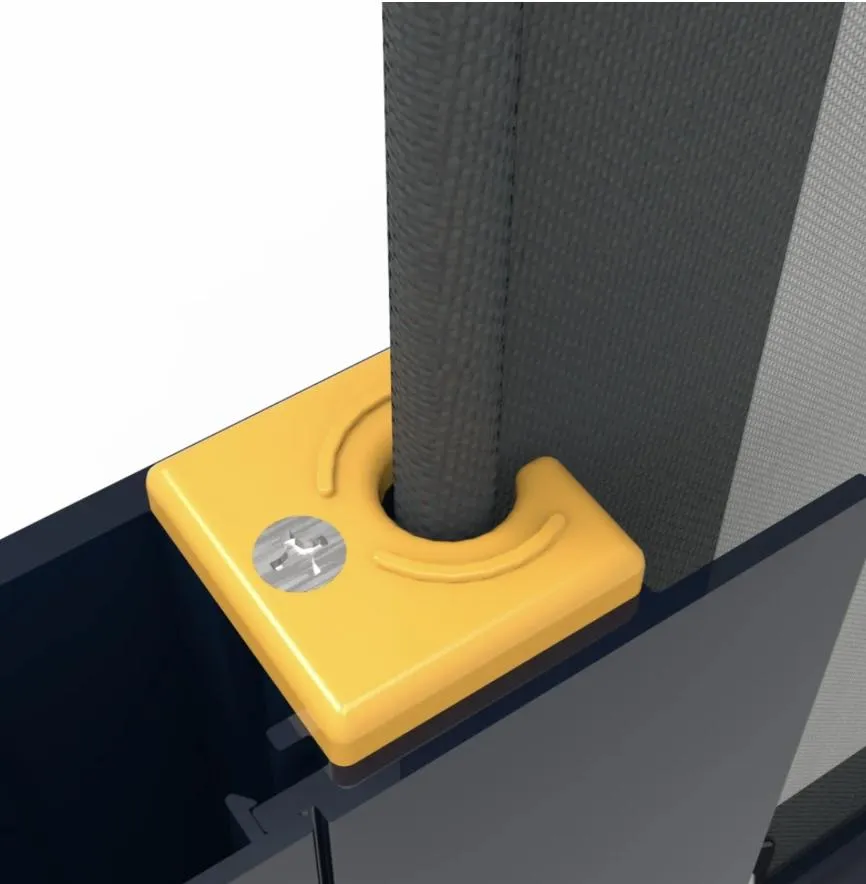
No Zipper. No Cable. Just Simple Deployment
MaxForce pioneered Keder-edge technology in motorized screens, delivering unmatched durability and simplicity. Borrowed from sailboat rigging, this system eliminates zippers, cables, and exposed hardware—ensuring smooth, reliable operation every time.
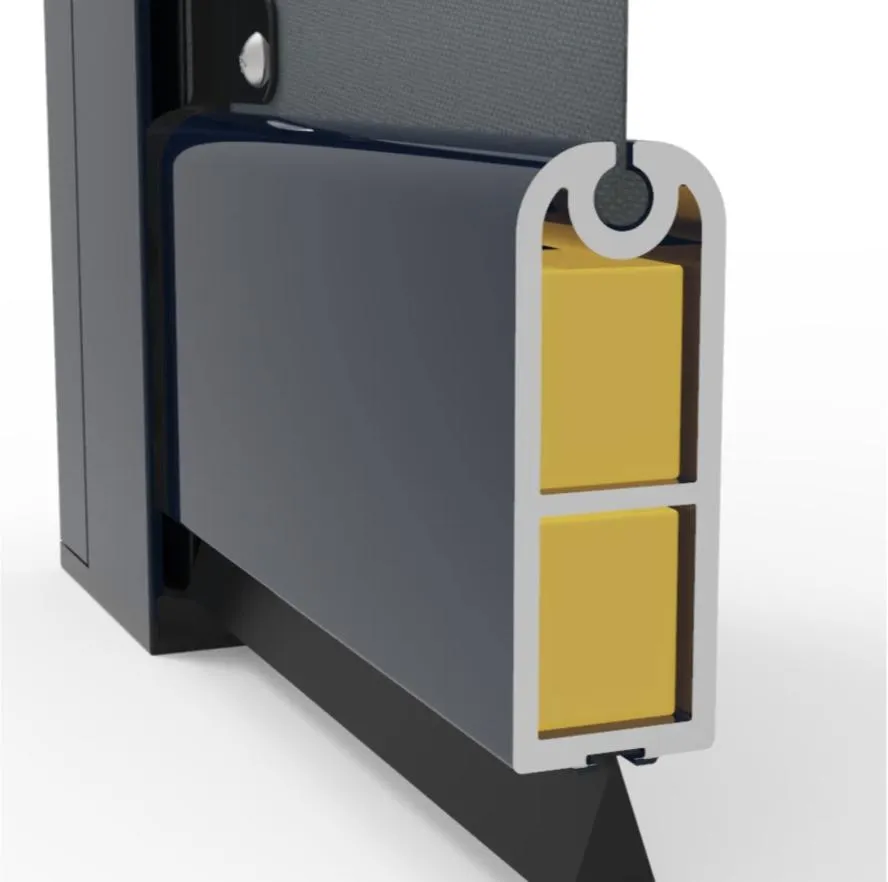
Heavy Duty
The MaxForce weight bar is engineered for strength—and built to hold its ground. Pound for pound, it’s the heaviest and most robust weight bar in the industry. This ensures proper screen tension, flawless deployment, and maximum stability in high wind zones. —limited flex, no failure.
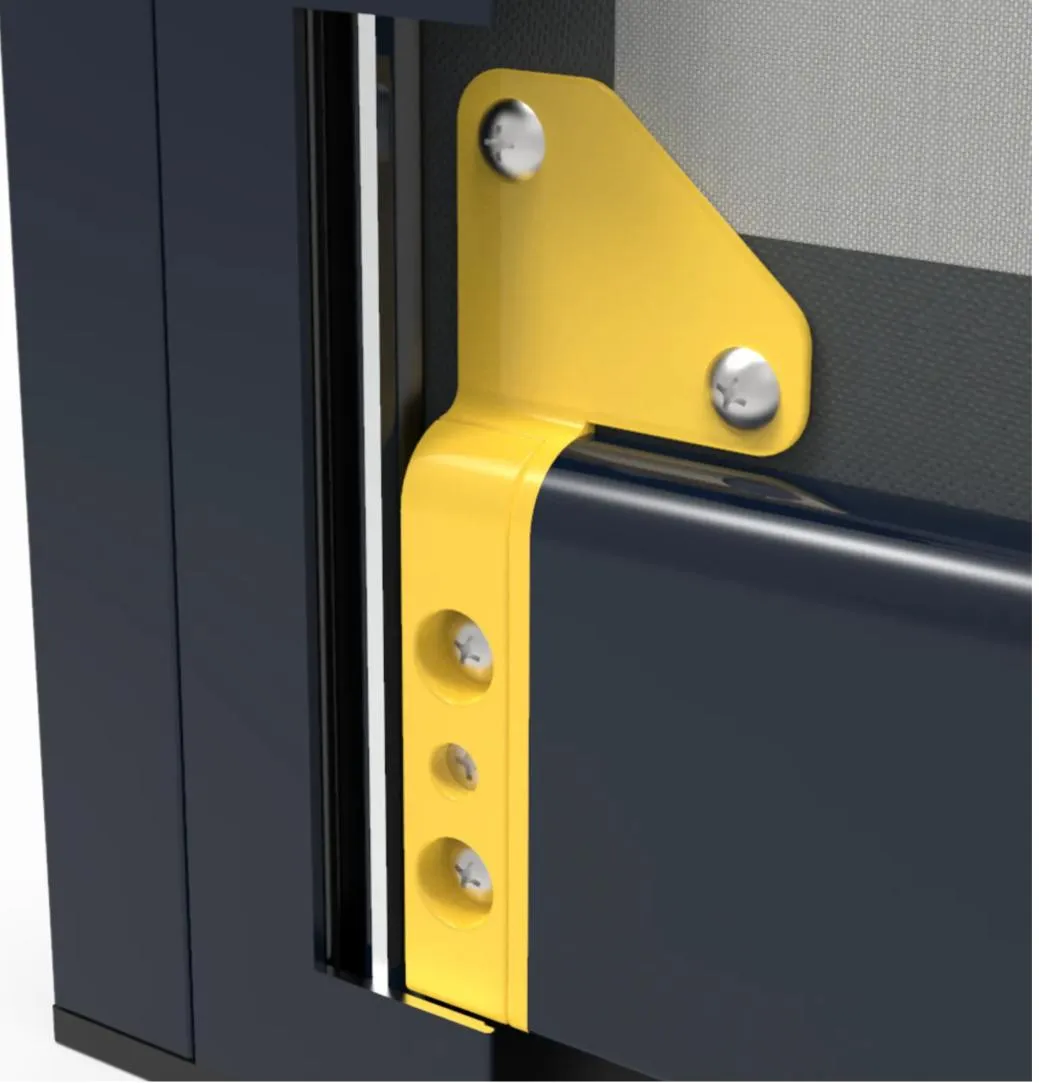
Reinforced Corners
MaxForce’s heavy-duty weight bar isn’t just strong. It’s smart. Reinforced corners and integrated tie-ins create a unified structure that acts like a solid wall of protection when deployed. Made from high-strength nylon, this bar absorbs impacts while maintaining structural integrity.
Motorized Hurricane Screen
Why Maxforce

MAXFORCE PROVEN PROTECT
Engineered For Excellence

For nearly two decades, MaxForce has manufactured hurricane screens to meet the most demanding building code, the High Velocity Hurricane Zone of Miami-Dade. The MaxForce track is our newest version of the fixed track we have used with great success for high wind applications all over the globe.
The benefits of a fixed track are unmatched strength - this is important when designing a screen system for hurricanes. When you want the strongest system available, and a proven veteran of many hurricanes, the MaxForce Hurricane Track is your best choice.
MAXFORCE THE #1 MOTORIZED
HURRICANE SCREEN
Contact A+ Certified MaxForce Screen
Dealer Today...
MAXFORCE HURRICANE SCREENS
Engineering Features

No blowouts. No rewraps.
No frustration.
MaxForce is the only retractable screen system on the market designed to stay locked in the track—even in high winds. Smart motor senses resistance and adjusts seamlessly, allowing self-correction when the screen encounters an obstacle: Fewer snags, fewer jams, and fewer costly service calls.

No Zipper. No Cable.
Just Simple Deployment
MaxForce pioneered Keder-edge technology in motorized screens, delivering unmatched durability and simplicity. Borrowed from sailboat rigging, this system eliminates zippers, cables, and exposed hardware—ensuring smooth, reliable operation every time.

Heavy Duty
The MaxForce weight bar is engineered for strength—and built to hold its ground. Pound for pound, it’s the heaviest and most robust weight bar in the industry. This ensures proper screen tension, flawless deployment, and maximum stability in high wind zones. —limited flex, no failure.

Reinforced Corners
MaxForce’s heavy-duty weight bar isn’t just strong. It’s smart. Reinforced corners and integrated tie-ins create a unified structure that acts like a solid wall of protection when deployed. Made from high-strength nylon, this bar absorbs impacts while maintaining structural integrity.

HEADACHE-FREE
Exclusive self-tensioning system eliminates 99.9% of screen issues. No track adjustments, broken zippers, or dislodged screens.

LIFETIME WARRANTY
Exterior shade screens reduce cooling bills and MaxForce hurricane screens reduce insurance premiums in hurricane zones.

HURRICANE STRONG
Our MaxForce tracks and advanced hybrid ballistic fabrics withstand 150+ mph winds. Approved by Florida Building Commission for hurricane zones. Lab and real-world tested.
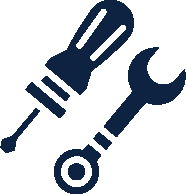
BUILT TO LAST
We use marine-grade materials such as powder-coated aluminum, UV-protected nylons, stainless steel fasteners, and premium fabrics. Resists corrosion, rust, and screen failure.

COST-SAVING
Exterior shade screens reduce cooling bills and MaxForce hurricane screens reduce insurance premiums in hurricane zones.
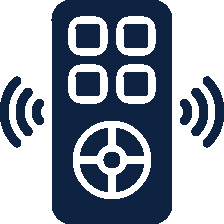
SMART CONTROLS
Control MaxForce screens via remote and
phone or integrate with popular home automation systems for advanced
capabilities.

SECURE TRACK
MaxForce Fix Hurricane Track holds firm under extreme loads

MAX CORROSION PROTECTION
Powder Coated Aluminum Protects your investment from exposer and corrosion.

HEAVY-DUTY DESIGN
Our screens are designed to withstand the extreme. High wind, Rain, or Shine, Dust Dirt, Dander, it doesn't matter. MaxForce Cover it all.

CUSTOM-MADE SCREENS
Tailor-made screens with vast color, fabric, and system options. Custom paint color and fabric matching are available.
MAXFORCE THE #1 MOTORIZED HURRICANE SCREEN
Contact A+ Certified MaxForce Screen Dealer Today...

HEADACHE-FREE
Exclusive self-tensioning system eliminates 99.9% of screen issues.
No track adjustments, broken zippers,
or dislodged screens.

LIFETIME WARRANTY
Exterior shade screens reduce cooling
bills and MaxForce hurricane screens
reduce insurance premiums in
hurricane zones.

HURRICANE STRONG
Our MaxForce tracks and advanced hybrid ballistic fabrics withstand
150+ mph winds. Approved by Florida Building Commission for hurricane
zones. Lab and real-world tested.

BUILT TO LAST
We use marine-grade materials such
as powder-coated aluminum, UV-protected nylons, stainless steel
fasteners, and premium fabrics. Resists corrosion, rust, and screen failure.

COST-SAVING
Exterior shade screens reduce cooling
bills and MaxForce hurricane screens
reduce insurance premiums in
hurricane zones.

SMART CONTROLS
Control MaxForce screens via remote and
phone or integrate with popular home automation systems for advanced
capabilities.

SECURE TRACK
MaxForce Fix Hurricane Track holds firm under extreme loads

MAX CORROSION PROTECTION
Powder Coated Aluminum Protects your investment from exposer and corrosion.

HEAVY-DUTY DESIGN
Our screens are designed to withstand
the extreme. High wind, Rain, or Shine,
Dust Dirt, Dander, it doesn't matter. MaxForce Cover it all.

CUSTOM-MADE SCREENS
Tailor-made screens with vast color, fabric, and system options. Custom
paint color and fabric matching are available.
MAXFORCE THE #1 MOTORIZED
HURRICANE SCREEN
Contact A+ Certified MaxForce Screen
Dealer Today...
MAXFORCE
Ready For Life's Storms

MAXFORCE HURRICANE SCREEN SYSTEM
A Certified, Tested System...
The MaxForce Hurricane Screen System meets or exceeds Miami-Dade and Florida Building Code requirements—the toughest hurricane codes on earth—for roll-down hurricane screens. Rated for the 185 MPH wind zone, and with real-world and certified testing. With spans of up to 25 feet, they exceed performance criteria for all local and International Building Codes.
MAXFORCE THE #1 MOTORIZED HURRICANE SCREEN
Contact A+ Certified MaxForce Screen Dealer Today...
MAXFORCE
Ready For Life's Storms

MAXFORCE HURRICANE SCREEN SYSTEM
A Certified, Tested System...
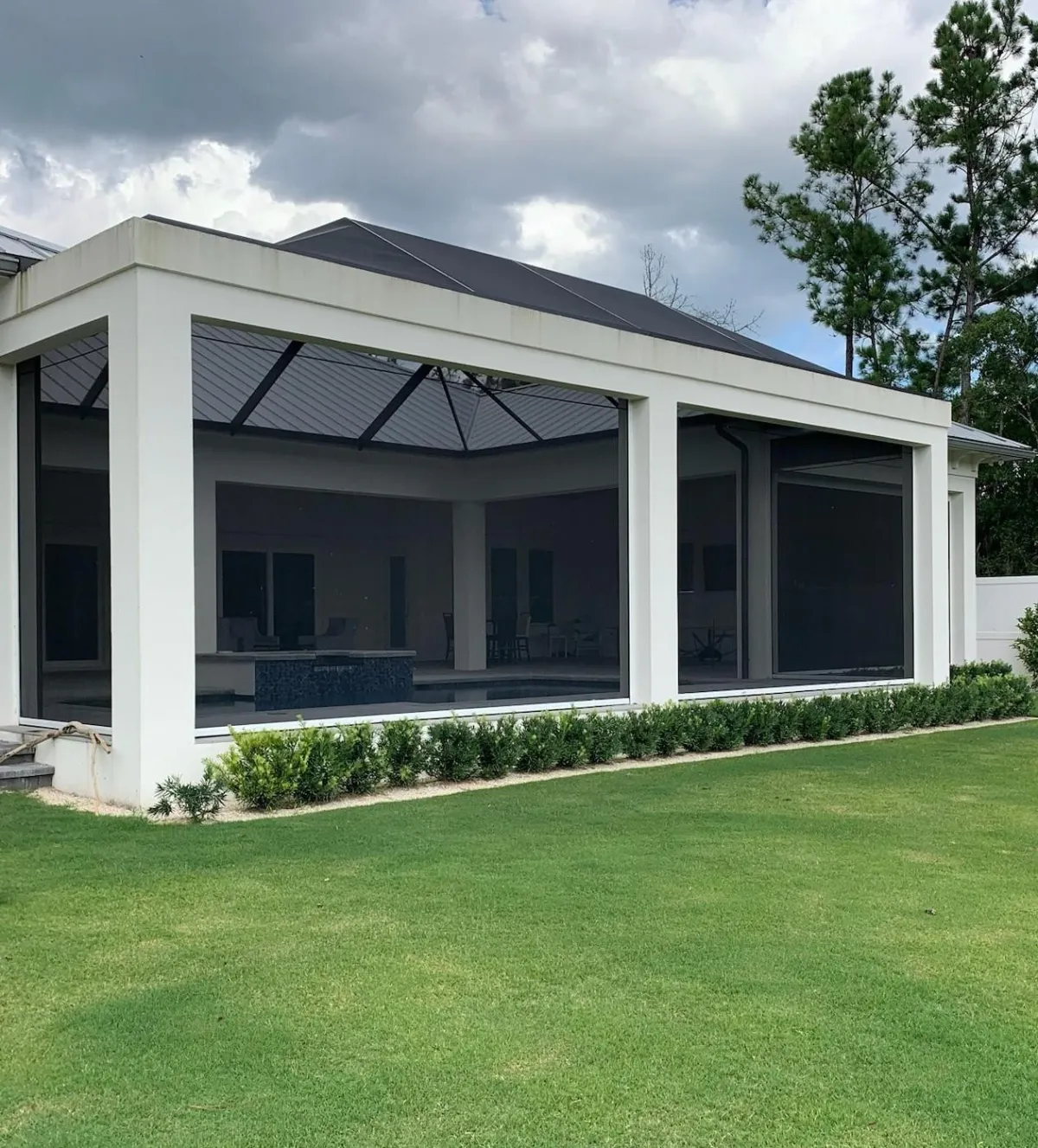
The MaxForce Hurricane Screen System meets or exceeds Miami-Dade and Florida Building Code requirements—the toughest hurricane codes on earth—for roll-down hurricane screens. Rated for the 185 MPH wind zone, and with real-world and certified testing. With spans of up to 25 feet, they exceed performance criteria for all local and International Building Codes.
MAXFORCE THE #1 MOTORIZED
HURRICANE SCREEN
Contact A+ Certified MaxForce Screen
Dealer Today...
THE MAXFORCE DIFFERENCE
Maxforce Hurricane Screen
THE MAXFORCE DIFFERENCE
MaxForce Hurricane Screen
MaxForce Hurricane Screens, powered by our MaxForce system, meet the toughest standards—including HVHZ certification in Miami-Dade and Broward. They last longer, resist more, and do more than any screen on the market—proven protection without compromise.
MaxForce Hurricane Screens —Delivers 365 days of perfect protection, rain or shine, on your patio and lanai. With the push of a button or a tap on the mobile app, your patio is storm-ready— furniture and openings fully protected in seconds.
MaxForce Hurricane Screens fabric blocks up to 95% of the sun’s damaging UV-rays while shielding against wind, rain, insects, dust, and debris. It also helps reduce heat and lower energy costs by limiting solar exposure—comfort and protection in one smart solution.
Like all Fenetex products, our MaxForce Hurricane Screens are highly customizable and built to order—made to fit your exact openings. No guesswork, no compromises—just precision-fit protection tailored to your space.
Pair our retractable MaxForce Hurricane Screens with other Fenetex screens for customized and independent solutions. Each screen operates independently, giving you the protection you want when you need it.
MaxForce Hurricane Screens offer built-in privacy without blocking your view. Like a two-way mirror, you can see out—but neighbors and passersby can not see in. It provides the perfect blend of openness and seclusion, day or night.
MAXFORCE THE #1 MOTORIZED HURRICANE SCREEN
Contact A+ Certified MaxForce Screen Dealer Today...
INTEGRITY MATTERS
How MaxForce Is Made Matters
MaxForce Hurricane Screens, powered by our MaxForce system, meet the toughest standards—including HVHZ certification in Miami-Dade and Broward. They last longer, resist more, and do more than any screen on the market—proven protection without compromise.
.
MaxForce Hurricane Screens —Delivers 365 days of perfect protection, rain or shine, on your patio and lanai. With the push of a button or a tap on the mobile app, your patio is storm-ready— furniture and openings fully protected in seconds.
MaxForce Hurricane Screens fabric blocks up to 95% of the sun’s damaging UV-rays while shielding against wind, rain, insects, dust, and debris. It also helps reduce heat and lower energy costs by limiting solar exposure—comfort and protection in one smart solution.
.
Like all Fenetex products, our MaxForce Hurricane Screens are highly customizable and built to order—made to fit your exact openings. No guesswork, no compromises—just precision-fit protection tailored to your space.
.
Pair our retractable MaxForce Hurricane Screens with other Fenetex screens for customized and independent solutions. Each screen operates independently, giving you the protection you want when you need it.
.
MaxForce Hurricane Screens offer built-in privacy without blocking your view. Like a two-way mirror, you can see out—but neighbors and passersby can not see in. It provides the perfect blend of openness and seclusion, day or night.
.
MAXFORCE THE #1 MOTORIZED
HURRICANE SCREEN
Contact A+ Certified MaxForce Screen
Dealer Today...
INTEGRITY MATTERS
How MaxForce Is
Made Matters
AMERICAN INGENUITY
Made in the USA.

Proudly Made in the USA—every MaxForce screen is built with American strength, precision, and pride. From the smallest components to the final assembly, our materials are sourced and manufactured right here in the United States. No outsourcing. No compromises. Just hardworking Americans protecting American homes with the toughest screen system on the market.
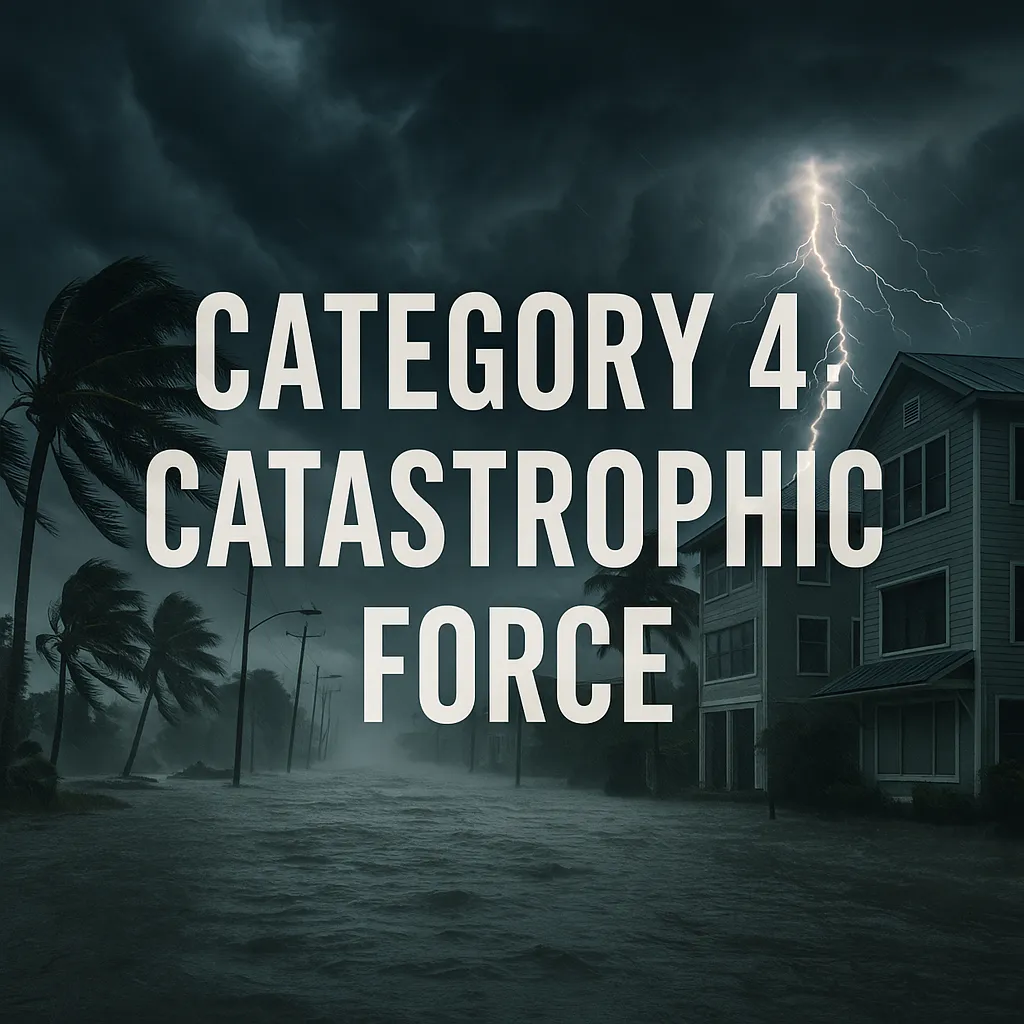
Category 4: Catastrophic Force
One hundred thirty miles per hour.
That's the threshold. The point where the National Hurricane Center stops using the word "devastating" and starts using "catastrophic." Where forecasters stop talking about major damage and start warning that "most of the area will be uninhabitable for weeks or months."
Category 4 hurricanes—with sustained winds from 130 to 156 mph—represent a level of destruction that fundamentally overwhelms communities. Not just homes. Not just power grids. Entire regions.
These aren't storms you recover from quickly. These are storms that redraw maps, displace populations, and create humanitarian crises. They erase coastlines. They isolate communities for weeks. They turn thriving towns into scenes that look like war zones.
This is catastrophic force. And everything about it lives up to the name.
The Wind That Erases
At 130 mph sustained winds, you're not just dealing with damage anymore. You're dealing with structural failure on a mass scale.
Well-built frame homes sustain severe damage with loss of most roof structure and sometimes exterior walls. Not partial roof failure. Most of the roof. Not damage to walls. Complete wall failure. The skeleton of the home gets compromised beyond simple repair.
Most trees—even healthy, mature hardwoods—don't just fall. They snap at mid-trunk or get ripped completely from the ground, root systems exposed. Power poles don't lean or crack. They break and fall. Entire sections of utility infrastructure collapse simultaneously.
Residential areas become isolated. Not for hours. Not for days. For weeks. Fallen trees and power poles block every road. Impassable debris fields extend for miles. Emergency vehicles can't reach people who need help. Supply trucks can't deliver food and water. Entire neighborhoods get cut off from the outside world.
Storm surge reaches thirteen to eighteen feet above normal tide. That's enough to inundate second and sometimes third floors. Enough to destroy entire coastal neighborhoods. Enough to push boats blocks inland and deposit them in living rooms.
And the power? Gone for weeks to possibly months. Power outages from Category 4 hurricanes require complete grid rebuilding across massive areas. Not repairs. Rebuilding. From scratch. In the middle of summer heat. Without air conditioning. Without refrigeration. Without any of the infrastructure modern life requires.
When Records Mean Nothing
August 25, 2017. Hurricane Harvey made landfall near Rockport, Texas as a Category 4 monster with 130 mph winds and a central pressure of 937 millibars.
The wind leveled buildings in Rockport. But the wind was just the opening act.
Harvey stalled over Texas and dumped more than 60 inches of rain in some locations—making it the wettest tropical cyclone ever to hit the United States. Cedar Bayou in Houston received 51.88 inches—a North American record.
One trillion gallons of water fell on Harris County in four days. Seventy percent of the county flooded by at least 1.5 feet. The storm caused $125 billion in damage, tied with Katrina as the costliest tropical cyclone in U.S. history.
Houston—the nation's fourth-largest city—went underwater. Thousands of people trapped on roofs. Emergency services overwhelmed. Highways transformed into rivers. Entire neighborhoods submerged. More than 30,000 people displaced. Over 200,000 homes damaged or destroyed.
Eighty-nine people died directly from the storm. Many more suffered long-term consequences from floodwaters, mold, and hazards left in the wake.
Two years later, some neighborhoods still hadn't fully recovered. Thousands still lived in FEMA trailers. Entire subdivisions remained abandoned. The psychological scars ran deeper than the physical ones.
But Harvey wasn't the only recent Category 4 to demonstrate what catastrophic means.
September 28, 2022. Hurricane Ian made landfall near Cayo Costa, Florida with 150 mph winds—just seven miles per hour shy of Category 5 status. The storm briefly touched Category 5 strength hours before landfall.
Ian's track shifted south at the last moment, catching Lee County officials off guard. Mandatory evacuations came late. Some residents never received orders. Others said it was too late to leave.
The storm surge was biblical. Twelve to eighteen feet above ground level along the southwestern Florida coast. Fort Myers recorded 7.26 feet—a record high that more than doubled the previous mark.
Water reached second-story condominiums. Residents became trapped in homes and vehicles. Drowning was the primary cause of death. Fifty-four people died as Ian made landfall. The final toll reached 149 in Florida alone.
Fort Myers Beach was decimated. Nine hundred structures completely destroyed. Another 2,200 damaged. In Lee County overall, 52,514 structures impacted—5,369 destroyed, 14,245 with major damage.
The Sanibel Causeway? Washed away. Pine Island bridge? Sections collapsed. Barrier islands became completely cut off from the mainland. Residents stranded for days, accessible only by boat or helicopter.
Ian caused $112 billion in damage—the costliest hurricane in Florida's history, surpassing Irma. The third-costliest in U.S. history overall.
Two years later, recovery continues. Some areas still look like disaster zones. Blue tarps still cover roofs. Rebuilt structures stand next to empty lots where homes once stood. The landscape—physical and social—changed forever.
The Infrastructure Reality
Category 4 hurricanes don't just damage infrastructure. They obliterate it.
Power grids collapse across entire regions. Substations flood. Transmission towers fall. Distribution lines lay tangled in debris for hundreds of miles. The damage is so extensive that utilities bring in crews from across the country—sometimes thousands of workers—and it still takes months to restore power to everyone.
Months. In Florida summer heat. In Texas humidity. Without air conditioning for vulnerable populations. Without refrigeration for medicine. Without the basic infrastructure that prevents humanitarian crisis.
Water treatment plants fail. Pumping stations flood. Pipes burst. Boil water advisories last for weeks or months as systems struggle to operate. In some areas, drinking water must be trucked in.
Communication networks collapse. Cell towers fall or lose power. Internet infrastructure fails. For days after landfall, affected areas exist in information blackout—unable to call for help, unable to check on loved ones, unable to access emergency information.
Roads become impassable. Not from flooding alone. From debris. Entire forests worth of trees blocking every route. Power lines across highways. Buildings collapsed into streets. It takes weeks just to clear main arteries. Neighborhood streets remain blocked for months.
Bridges fail. Causeways wash out. Entire communities become islands, cut off from emergency services, medical care, food supplies. Helicopter evacuations become the only option. But helicopters can only carry so many people, so many at a time.
The Human Cost
The death toll from Category 4 hurricanes extends far beyond direct storm fatalities.
People die in the immediate impact—drowning in storm surge, crushed by collapsing structures, struck by flying debris. But then come the secondary deaths. Heart attacks from stress and exertion. Heat-related illness from weeks without air conditioning. Carbon monoxide poisoning from generators run improperly. Accidents during cleanup. Medical emergencies that can't get treatment because hospitals are flooded or unreachable.
The displaced number in the tens of thousands. Entire communities evacuate and never return. People move in with relatives across the state or country. FEMA trailers become home for years. The population geography of affected regions changes permanently.
The economic devastation ripples outward. Businesses close. Jobs disappear. Property values crash. Insurance companies go bankrupt—200,000 Ian claims couldn't be paid when carriers went out of business. People who thought they were protected discover they're not.
The psychological trauma lasts generations. Children who survive catastrophic hurricanes carry those memories forever. Communities lose their sense of security. Every tropical wave in the Atlantic triggers anxiety. Every forecast cone pointing toward your region brings back the terror.
This is what catastrophic means. Not just property loss. Human toll that extends years beyond the storm itself.
Why Category 4 Changes Everything
Category 3 is devastating. Category 4 is catastrophic. That semantic difference represents a fundamental shift in what's survivable and what's not.
Category 3 storms—as destructive as they are—leave most well-built structures standing, even if badly damaged. Category 4 storms can destroy those same structures completely. Exterior walls fail. Roofs don't just lose decking—they collapse entirely. Homes become uninhabitable.
Category 3 power outages last weeks. Category 4 outages last months. The difference between inconvenience and humanitarian crisis. Between communities that can function without utilities and communities that cannot.
Category 3 evacuation orders are serious. Category 4 evacuation orders are life-or-death. The difference between preparing to shelter in place and knowing you must leave or die trying.
The damage from Category 4 storms is so extensive that FEMA estimates areas will be uninhabitable for weeks to months. Not uncomfortable. Uninhabitable. No power. No water. No functional buildings. No way to live.
Protection Becomes Inadequate
Here's the hard truth about Category 4 hurricanes: residential protection has limits.
Hurricane-rated impact windows help. But at 130+ mph sustained winds, even impact-resistant glass can fail. Screens provide defense against debris. But Category 4 wind can overwhelm any opening protection system.
Reinforced roofing helps. But when winds exceed 150 mph, roof-to-wall connections fail regardless of engineering. The forces involved surpass what residential construction—even hardened coastal construction—was designed to withstand.
Even concrete structures sustain severe damage at Category 4 intensity. Commercial buildings lose roofs. High-rise windows blow out. Metal buildings collapse.
The only truly safe protection from Category 4 hurricanes is distance. Evacuation. Getting away from the storm surge zone. Getting away from barrier islands. Getting away from coastal areas that will become uninhabitable.
Because once winds hit 130 mph sustained, you're not protecting your home anymore. You're protecting your life. And that requires leaving.
The Bottom Line
Category 4 hurricanes represent a level of power that modern coastal communities cannot fully withstand.
The winds are catastrophic—130 to 156 mph sustained, with gusts far higher. The damage is extreme—complete roof failure, wall collapse, widespread destruction. The infrastructure failure is total—power gone for months, water systems destroyed, communication networks obliterated.
These storms create humanitarian crises. Mass evacuations. Long-term displacement. Economic devastation measured in hundreds of billions. Death tolls that would be higher except for massive emergency response efforts.
Harvey and Ian—two recent Category 4 storms—caused over $235 billion in combined damage. Killed more than 230 people directly. Displaced hundreds of thousands. Changed entire regions forever.
When a Category 4 threatens your area, you have one responsibility: evacuate if you're in the evacuation zone. Period. The "I've been through hurricanes before" mentality gets people killed at this intensity. The "my house is well-built" confidence becomes irrelevant when the house gets destroyed.
Category 4 is catastrophic force. It's called that for a reason. Because at this level, hurricanes don't just damage communities—they erase them. They don't just disrupt lives—they end them. They don't just test infrastructure—they obliterate it.
And when officials say evacuate, they're not being cautious. They're being realistic about what happens when 150 mph winds meet human civilization.
Most areas will be uninhabitable for weeks or months afterward. That's not worst-case scenario. That's the expected outcome.
When Category 4 targets your coastline, the only question that matters is: will you be there when it arrives?
The answer should always be no.
Next in the series: Category 5: The Ultimate Storm
Previous post: Category 3: Major Hurricane Territory
Additional Resources:
National Hurricane Center - Catastrophic Damage - Official Category 4 definition
NOAA Hurricane Harvey Analysis - Comprehensive storm review
NHC Hurricane Ian Report - Official tropical cyclone report
Company
MaxForce Hurricane Screens
Design Ideals
Resources

© 2025 Maxforce - Powered by Fenetex and Friends of Oatis
AMERICAN INGENUITY
Made in the USA
Proudly Made in the USA—every MaxForce screen is built with American strength, precision, and pride. From the smallest components to the final assembly, our materials are sourced and manufactured right here in the United States. No outsourcing. No compromises. Just hardworking Americans protecting American homes with the toughest screen system on the market.

Category 4: Catastrophic Force
One hundred thirty miles per hour.
That's the threshold. The point where the National Hurricane Center stops using the word "devastating" and starts using "catastrophic." Where forecasters stop talking about major damage and start warning that "most of the area will be uninhabitable for weeks or months."
Category 4 hurricanes—with sustained winds from 130 to 156 mph—represent a level of destruction that fundamentally overwhelms communities. Not just homes. Not just power grids. Entire regions.
These aren't storms you recover from quickly. These are storms that redraw maps, displace populations, and create humanitarian crises. They erase coastlines. They isolate communities for weeks. They turn thriving towns into scenes that look like war zones.
This is catastrophic force. And everything about it lives up to the name.
The Wind That Erases
At 130 mph sustained winds, you're not just dealing with damage anymore. You're dealing with structural failure on a mass scale.
Well-built frame homes sustain severe damage with loss of most roof structure and sometimes exterior walls. Not partial roof failure. Most of the roof. Not damage to walls. Complete wall failure. The skeleton of the home gets compromised beyond simple repair.
Most trees—even healthy, mature hardwoods—don't just fall. They snap at mid-trunk or get ripped completely from the ground, root systems exposed. Power poles don't lean or crack. They break and fall. Entire sections of utility infrastructure collapse simultaneously.
Residential areas become isolated. Not for hours. Not for days. For weeks. Fallen trees and power poles block every road. Impassable debris fields extend for miles. Emergency vehicles can't reach people who need help. Supply trucks can't deliver food and water. Entire neighborhoods get cut off from the outside world.
Storm surge reaches thirteen to eighteen feet above normal tide. That's enough to inundate second and sometimes third floors. Enough to destroy entire coastal neighborhoods. Enough to push boats blocks inland and deposit them in living rooms.
And the power? Gone for weeks to possibly months. Power outages from Category 4 hurricanes require complete grid rebuilding across massive areas. Not repairs. Rebuilding. From scratch. In the middle of summer heat. Without air conditioning. Without refrigeration. Without any of the infrastructure modern life requires.
When Records Mean Nothing
August 25, 2017. Hurricane Harvey made landfall near Rockport, Texas as a Category 4 monster with 130 mph winds and a central pressure of 937 millibars.
The wind leveled buildings in Rockport. But the wind was just the opening act.
Harvey stalled over Texas and dumped more than 60 inches of rain in some locations—making it the wettest tropical cyclone ever to hit the United States. Cedar Bayou in Houston received 51.88 inches—a North American record.
One trillion gallons of water fell on Harris County in four days. Seventy percent of the county flooded by at least 1.5 feet. The storm caused $125 billion in damage, tied with Katrina as the costliest tropical cyclone in U.S. history.
Houston—the nation's fourth-largest city—went underwater. Thousands of people trapped on roofs. Emergency services overwhelmed. Highways transformed into rivers. Entire neighborhoods submerged. More than 30,000 people displaced. Over 200,000 homes damaged or destroyed.
Eighty-nine people died directly from the storm. Many more suffered long-term consequences from floodwaters, mold, and hazards left in the wake.
Two years later, some neighborhoods still hadn't fully recovered. Thousands still lived in FEMA trailers. Entire subdivisions remained abandoned. The psychological scars ran deeper than the physical ones.
But Harvey wasn't the only recent Category 4 to demonstrate what catastrophic means.
September 28, 2022. Hurricane Ian made landfall near Cayo Costa, Florida with 150 mph winds—just seven miles per hour shy of Category 5 status. The storm briefly touched Category 5 strength hours before landfall.
Ian's track shifted south at the last moment, catching Lee County officials off guard. Mandatory evacuations came late. Some residents never received orders. Others said it was too late to leave.
The storm surge was biblical. Twelve to eighteen feet above ground level along the southwestern Florida coast. Fort Myers recorded 7.26 feet—a record high that more than doubled the previous mark.
Water reached second-story condominiums. Residents became trapped in homes and vehicles. Drowning was the primary cause of death. Fifty-four people died as Ian made landfall. The final toll reached 149 in Florida alone.
Fort Myers Beach was decimated. Nine hundred structures completely destroyed. Another 2,200 damaged. In Lee County overall, 52,514 structures impacted—5,369 destroyed, 14,245 with major damage.
The Sanibel Causeway? Washed away. Pine Island bridge? Sections collapsed. Barrier islands became completely cut off from the mainland. Residents stranded for days, accessible only by boat or helicopter.
Ian caused $112 billion in damage—the costliest hurricane in Florida's history, surpassing Irma. The third-costliest in U.S. history overall.
Two years later, recovery continues. Some areas still look like disaster zones. Blue tarps still cover roofs. Rebuilt structures stand next to empty lots where homes once stood. The landscape—physical and social—changed forever.
The Infrastructure Reality
Category 4 hurricanes don't just damage infrastructure. They obliterate it.
Power grids collapse across entire regions. Substations flood. Transmission towers fall. Distribution lines lay tangled in debris for hundreds of miles. The damage is so extensive that utilities bring in crews from across the country—sometimes thousands of workers—and it still takes months to restore power to everyone.
Months. In Florida summer heat. In Texas humidity. Without air conditioning for vulnerable populations. Without refrigeration for medicine. Without the basic infrastructure that prevents humanitarian crisis.
Water treatment plants fail. Pumping stations flood. Pipes burst. Boil water advisories last for weeks or months as systems struggle to operate. In some areas, drinking water must be trucked in.
Communication networks collapse. Cell towers fall or lose power. Internet infrastructure fails. For days after landfall, affected areas exist in information blackout—unable to call for help, unable to check on loved ones, unable to access emergency information.
Roads become impassable. Not from flooding alone. From debris. Entire forests worth of trees blocking every route. Power lines across highways. Buildings collapsed into streets. It takes weeks just to clear main arteries. Neighborhood streets remain blocked for months.
Bridges fail. Causeways wash out. Entire communities become islands, cut off from emergency services, medical care, food supplies. Helicopter evacuations become the only option. But helicopters can only carry so many people, so many at a time.
The Human Cost
The death toll from Category 4 hurricanes extends far beyond direct storm fatalities.
People die in the immediate impact—drowning in storm surge, crushed by collapsing structures, struck by flying debris. But then come the secondary deaths. Heart attacks from stress and exertion. Heat-related illness from weeks without air conditioning. Carbon monoxide poisoning from generators run improperly. Accidents during cleanup. Medical emergencies that can't get treatment because hospitals are flooded or unreachable.
The displaced number in the tens of thousands. Entire communities evacuate and never return. People move in with relatives across the state or country. FEMA trailers become home for years. The population geography of affected regions changes permanently.
The economic devastation ripples outward. Businesses close. Jobs disappear. Property values crash. Insurance companies go bankrupt—200,000 Ian claims couldn't be paid when carriers went out of business. People who thought they were protected discover they're not.
The psychological trauma lasts generations. Children who survive catastrophic hurricanes carry those memories forever. Communities lose their sense of security. Every tropical wave in the Atlantic triggers anxiety. Every forecast cone pointing toward your region brings back the terror.
This is what catastrophic means. Not just property loss. Human toll that extends years beyond the storm itself.
Why Category 4 Changes Everything
Category 3 is devastating. Category 4 is catastrophic. That semantic difference represents a fundamental shift in what's survivable and what's not.
Category 3 storms—as destructive as they are—leave most well-built structures standing, even if badly damaged. Category 4 storms can destroy those same structures completely. Exterior walls fail. Roofs don't just lose decking—they collapse entirely. Homes become uninhabitable.
Category 3 power outages last weeks. Category 4 outages last months. The difference between inconvenience and humanitarian crisis. Between communities that can function without utilities and communities that cannot.
Category 3 evacuation orders are serious. Category 4 evacuation orders are life-or-death. The difference between preparing to shelter in place and knowing you must leave or die trying.
The damage from Category 4 storms is so extensive that FEMA estimates areas will be uninhabitable for weeks to months. Not uncomfortable. Uninhabitable. No power. No water. No functional buildings. No way to live.
Protection Becomes Inadequate
Here's the hard truth about Category 4 hurricanes: residential protection has limits.
Hurricane-rated impact windows help. But at 130+ mph sustained winds, even impact-resistant glass can fail. Screens provide defense against debris. But Category 4 wind can overwhelm any opening protection system.
Reinforced roofing helps. But when winds exceed 150 mph, roof-to-wall connections fail regardless of engineering. The forces involved surpass what residential construction—even hardened coastal construction—was designed to withstand.
Even concrete structures sustain severe damage at Category 4 intensity. Commercial buildings lose roofs. High-rise windows blow out. Metal buildings collapse.
The only truly safe protection from Category 4 hurricanes is distance. Evacuation. Getting away from the storm surge zone. Getting away from barrier islands. Getting away from coastal areas that will become uninhabitable.
Because once winds hit 130 mph sustained, you're not protecting your home anymore. You're protecting your life. And that requires leaving.
The Bottom Line
Category 4 hurricanes represent a level of power that modern coastal communities cannot fully withstand.
The winds are catastrophic—130 to 156 mph sustained, with gusts far higher. The damage is extreme—complete roof failure, wall collapse, widespread destruction. The infrastructure failure is total—power gone for months, water systems destroyed, communication networks obliterated.
These storms create humanitarian crises. Mass evacuations. Long-term displacement. Economic devastation measured in hundreds of billions. Death tolls that would be higher except for massive emergency response efforts.
Harvey and Ian—two recent Category 4 storms—caused over $235 billion in combined damage. Killed more than 230 people directly. Displaced hundreds of thousands. Changed entire regions forever.
When a Category 4 threatens your area, you have one responsibility: evacuate if you're in the evacuation zone. Period. The "I've been through hurricanes before" mentality gets people killed at this intensity. The "my house is well-built" confidence becomes irrelevant when the house gets destroyed.
Category 4 is catastrophic force. It's called that for a reason. Because at this level, hurricanes don't just damage communities—they erase them. They don't just disrupt lives—they end them. They don't just test infrastructure—they obliterate it.
And when officials say evacuate, they're not being cautious. They're being realistic about what happens when 150 mph winds meet human civilization.
Most areas will be uninhabitable for weeks or months afterward. That's not worst-case scenario. That's the expected outcome.
When Category 4 targets your coastline, the only question that matters is: will you be there when it arrives?
The answer should always be no.
Next in the series: Category 5: The Ultimate Storm
Previous post: Category 3: Major Hurricane Territory
Additional Resources:
National Hurricane Center - Catastrophic Damage - Official Category 4 definition
NOAA Hurricane Harvey Analysis - Comprehensive storm review
NHC Hurricane Ian Report - Official tropical cyclone report
Company
MaxForce Hurricane Screens
Design Ideals
Resources

© 2025 Maxforce - Powered by Fenetex and Friends of Oatis

